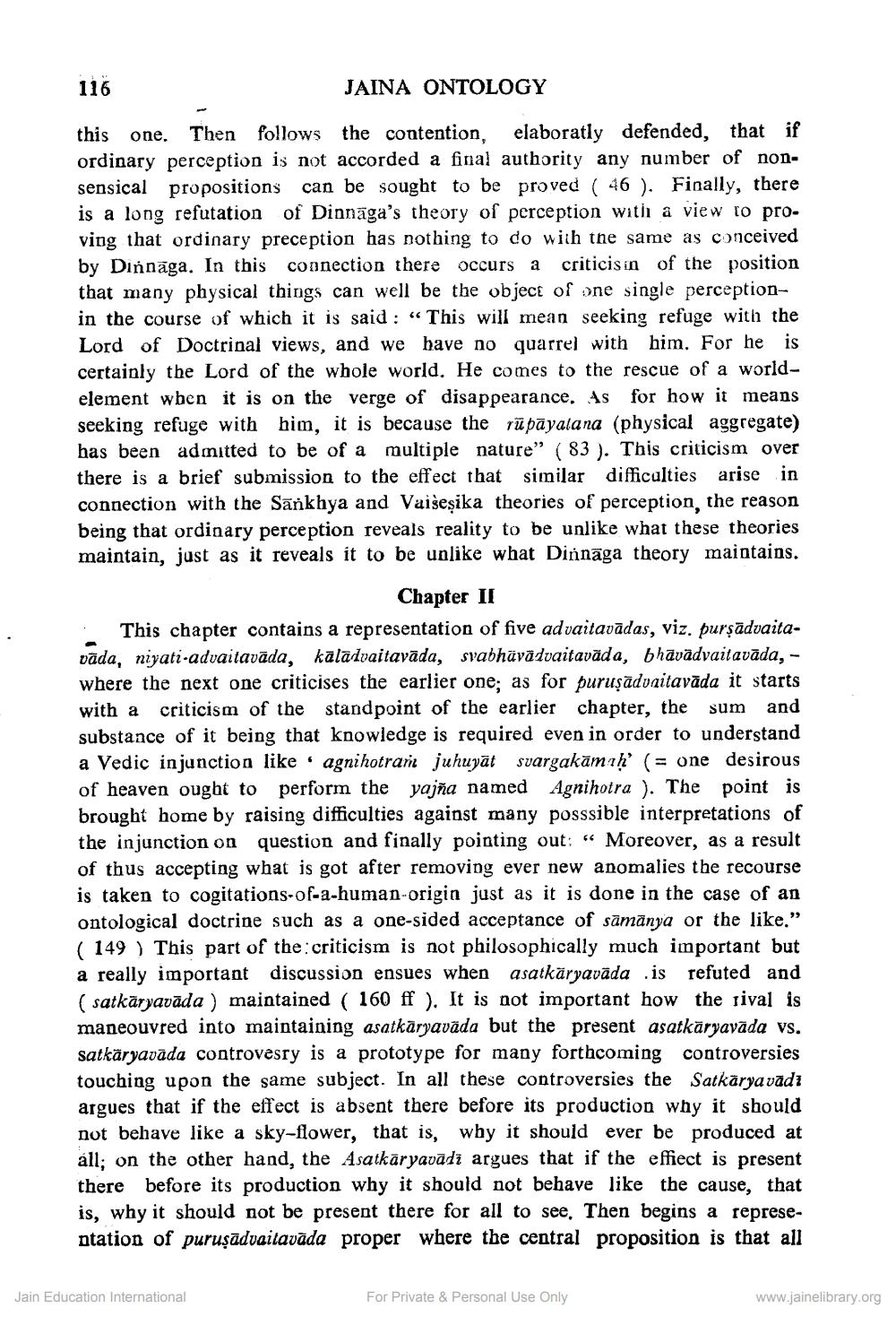________________
116
JAINA ONTOLOGY
this one. Then follows the contention, elaboratly defended, that if ordinary perception is not accorded a final authority any number of nonsensical propositions can be sought to be proved ( 46 ). Finally, there is a long refutation of Dinnāga's theory of perception with a view to proving that ordinary preception has nothing to do with the same as conceived by Dinnāga. In this connection there occurs a criticisin of the position that many physical things can well be the object of one single perceptionin the course of which it is said : “ This will mean seeking refuge with the Lord of Doctrinal views, and we have no quarrel with him. For he is certainly the Lord of the whole world. He comes to the rescue of a worldelement wben it is on the verge of disappearance. As for how it means seeking refuge with him, it is because the rūpāyalana (physical aggregate) has been admitted to be of a multiple nature" ( 83 ). This criticism over there is a brief submission to the effect that similar difficulties arise in connection with the Sārkhya and Vaišeșika theories of perception, the reason being that ordinary perception reveals reality to be unlike what these theories maintain, just as it reveals it to be unlike what Dinnāga theory maintains.
Chapter II . This chapter contains a representation of five advaitavādas, viz. purşādvaitavāda, niyati.advaitavāda, kaladvaitavāda, svabhāvādvaitavāda, bhāvādvaitavāda, - where the next one criticises the earlier one; as for puruṣādvaitavāda it starts with a criticism of the standpoint of the earlier chapter, the sum and substance of it being that knowledge is required even in order to understand a Vedic injunction like · agnihotram juhuyāt svargakāmiņ' (= one desirous of heaven ought to perform the yajña named Agnihotra ). The point is brought home by raising difficulties against many posssible interpretations of the injunction on question and finally pointing out: “ Moreover, as a result of thus accepting what is got after removing ever new anomalies the recourse is taken to cogitations-of-a-human-origin just as it is done in the case of an ontological doctrine such as a one-sided acceptance of sāmānya or the like.” ( 149 ) This part of the criticism is not philosophically much important but a really important discussion ensues when asatkāryavāda is refuted and (satkāryavāda ) maintained ( 160 ff ). It is not important how the rival is maneouvred into maintaining asatkāryavāda but the present asatkāryavāda vs. satkäryavāda controvesry is a prototype for many forthcoming controversies touching upon the same subject. In all these controversies the Satkāryavādı argues that if the effect is absent there before its production why it should not behave like a sky-flower, that is why it should ever be produced at all; on the other hand, the Asatkāryavādi argues that if the effiect is present there before its production why it should not behave like the cause, that is, why it should not be present there for all to see. Then begins a representation of puruşādvaitavāda proper where the central proposition is that all
Jain Education International
For Private & Personal Use Only
www.jainelibrary.org




